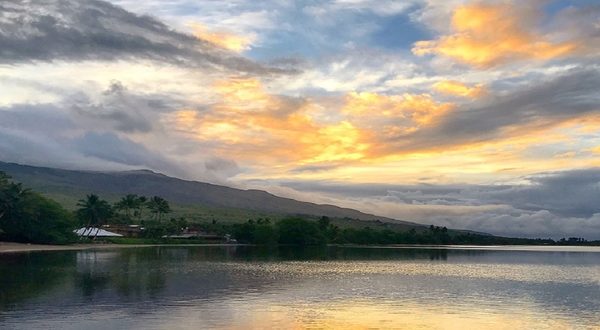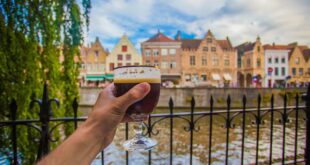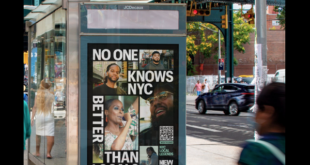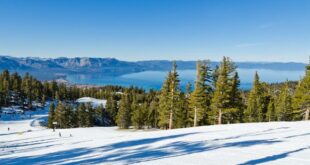[ad_1]
Each of the Hawaiian Islands has its own unique charm, and Moloka‘i is no different. Local residents often talk about the island as the piko, or umbilicus of the island chain. Hawaiian traditions regard piko as a symbol of continuity with the past, and visitors to Moloka‘i will find themselves transported to a gracious, slow-paced past where they can truly unplug and unwind.
As universally sought-after as going off the grid might sound, the most important thing to stress is that Moloka‘i is not for everybody. Visitors expecting similarities with other islands in the chain, like a selection of resorts with endless amenities and shopping malls will come away disappointed. With an island-wide population of around 7,500 and little vehicle traffic, there’s not even a stoplight.
The payoff for the right visitor is a virtually untouched, unspoiled land that isn’t notably different from how it was decades ago. If there is an “Old Hawai‘i” to be found, this is the place to look for it. During my visit, I spent my days hearing colorful stories from island residents who radiated light and life. These people take strong personal pride in their stories and in their community, and they all demonstrated deep investment in maintaining the unique magic that makes their island community so welcoming.
As we toured the island hearing mo‘olelo (stories) from ‘anake (Auntie) Penny Rawlins Martin, the same proverb was mentioned several times: he wa‘a he moku, he moke he wa‘a—“A canoe is an island; an island is a canoe.” The meaning here is that a wa‘a or canoe, like an island community, contains resources for the benefit of all aboard, but only if all work together to keep improving the course and making progress toward a destination. In being communal stewards of the finite resources of the island canoe, their ends are provided for.
‘Anake Penny is no stranger to wa‘a—she was a crewmember onboard the vessel Hokule‘a during its inaugural 1976 return voyage from Tahiti to Hawai‘i Nei. “It was Hawai‘i’s contribution to the bicentennial,” she says, wryly, as I consider the irony of the anniversary of American independence eclipsing the reenactment of a Polynesian creation story that precedes it by nearly a thousand years.
Hawaiian identity here goes far beyond the typical words taught to visitors at commercial luaus (of which there are none on the island) elsewhere in Hawai‘i Nei. Instead, we kept hearing themes of kuleana (responsibility) and pono (righteousness or propriety). For many residents, their kuleana is stewardship of their island, bequeathed to them by the goddess Hina, which tradition holds is Moloka‘i’s parent deity.
Greg Kawaimaka Solatorio, who lives on the land of his ancestors in Halawa Valley, considers it his kuleana to educate visitors on the differences in how Hawaiian culture is presented for marketing purposes compared with historical practice. Among them: greetings were a far more complex protocol than the modern “Aloha”, and lu‘au, which is not a dinner party, but a dish served at a gathering called a pa‘ina.
“The traditions we share are sacred, but not secret.” Solatorio explains. He’s willing to share the brimming natural beauty of the valley with visitors, but they must be prepared to respect the traditions and history of the land they’re about to enjoy. In the traditional way, visitors are shown how to bring gifts (hosting guests takes time away from food production), state their purpose and intent, and share breath by touching noses and foreheads.
The one town on the island, Kaunakakai (known to island residents as simply “Town”), is a sleepy main street of shops and restaurants, mostly in plantation-era buildings. The island’s only gas stations are found here, as are the majority of commercial services. One can take solace knowing that most money spent on the island will benefit the local community. Most shop owners and tour operators are local residents and even the modest fee for paddling excursions past the pier to see honu (green turtles) goes right back into the hosting canoe club.
Sit for any period of time in Kanemitsu’s Bakery (home of the famous late-night, backalley “hot bread”), perhaps with a cup of coffee and a brilliant purple taro donut, and one is almost guaranteed to overhear some local gossip. Elders here are revered with deference: any elder is “auntie” or “uncle” in the island style. In turn, they nurture the island’s youth: on Friday night diners in the restaurant at Hotel Moloka‘i could buy island crafts or tickets to a benefit concert to fundraise for local students to travel to visit potential universities on the mainland.
On neighboring Maui, one might often hear the phrase Maui no ka oi (“Maui is the best”) – the friendly rejoinder from Moloka‘i is Moloka‘i No Ka Heke – which is stated colloquially in Pidgin English on a popular green bumper sticker one is bound to see at least once during a visit here: “Moloka‘i Mo Bettah!”
Getting There
There is no nonstop service to Moloka‘i from the U.S. Mainland. Daily service is available from neighbor islands on ‘Ohana by Hawaiian, Mokulele Airlines, or Makani Kai Air.
Lodging
Hotel Moloka‘i is the only hotel on the island, just outside of Town. Don’t expect a box high-rise here: the midcentury bungalow-style buildings have a rather Swiss Family Robinson feel and the charming oceanfront restaurant and open-air lobby are just as sleepy as the island on whole. Accommodations range from motel-style garden view rooms to a deluxe oceanfront suite.
Private rentals are available elsewhere on the island, and Molokai Shores rents units under the Castle Resorts banner.
Additional Activities
Moloka‘i Plumerias sells plumeria lei and loose flowers, offers tours and lei workshops, and allows pick-your-own collection.
Moloka‘i Outdoors offers tours, transportation, and adventure outfitting
Something for Everybody offers custom silk-screened apparel and Molokai travel tips
Dining
Hiro’s ‘Ohana Grill At Hotel Molokai – fresh seafood, poke, pupus, grilled meats and desserts for lunch and dinner with nightly live music.
Molokai Burger Kaunakakai – quick service burgers, Hawaiian plates, and desserts. Dine in or drive-thru.
Paddlers Restaurant Kaunakakai – steaks, seafood, pupus, and drink specials in a covered open air pavilion with nightly live music.
Moloka‘i Pizza Café – Kaunakakai – pizza, pasta, and salads in traditional pizza parlor environs.
Learn More
Visit the Hawai‘i Tourism Authority’s Moloka‘i informational pages here.
Travel and accommodations were furnished by Destination Moloka‘i Visitors Bureau in preparation for this story.
NOTE: The author recognizes the importance of Hawaiian language diacritical marks such as the kahako (macron), but some may have been omitted for web browser compatibility.
[ad_2]You can read more of the news on source
 Travelsmart
Travelsmart



